Location recordings, live broadcasts and transcriptions of Duke Ellington and his Famous Orchestra 1940-63 reveal performances distinctively different from their studio sound. This column presents music from dances, live shows and the legendary 1940 Fargo, North Dakota concert. Freshly restored broadcast tapes from Duke’s Birthday Sessions recorded in Portland 1953-54 are also heard.
Heat of the Moment
“Duke” Ellington (1899-1974) was an inventive, charming, gifted, hard-working jazz musician and composer of some 2000 musical works. Yet, considered solely as a performing bandleader and pianist he would be ranked a premier jazz musician — his other vast accomplishments aside.
Duke Ellington and his Famous Orchestra achieved widespread fame by 1930 thanks to nationwide network radio hookups from the Cotton Club in Harlem. But they soon realized that there was a significant difference between their studio sessions versus live concerts and dance dates.
The drive, swing and spontaneity of playing for live audiences or dancers was muted in the theatricals, stage shows or terse constraints of a 3:00-4:00 minute 78 rpm disc — though Duke was a master of that medium. Fortunately, a plethora of excellent live performances were recorded on audiotape or transcription disc dating back to the mid-1930s.
Beginning in the late-1950s mainstream record labels discovered the marketability of Ellington’s live shows. They issued albums made from tapes recorded at Newport and Monterey jazz festivals or from concerts in Paris, Cote d’Azur, Stockholm and Berlin. Today hundreds of live Ellington concerts and performances are available on CD, LP or subscription streaming services.
Los Angeles 1945 – It Don’t Mean a Thing & Air Conditioned Jungle.mp3
Fanning a Spark
From their 1927 opening at the famed Cotton Club nightclub in Harlem, Duke Ellington and his Famous Orchestra (as they were officially billed) set the highest standards for musicality, solo improvisation, imaginative ideas and classy presentation. Duke wrote and recorded hundreds, possibly thousands of tunes, performing all over the world, maintaining a continuously working orchestra for more than four decades.
Ellington’s tunes were often created to feature a specific instrumentalist highlighting their particular talents, adapting and refining their themes. It has been said that Duke’s true instrument was his orchestra. Yet he was a keyboard master second to none — subtle, imaginative, stylish and tasteful — his grace notes offering counterpoint and commentary to the ensemble.
Through his plentiful songwriting and composing, he continuously advanced innovative ideas in melody, harmony and form, employing the very finest jazz improvisors and stylists who often found their best moments in his orchestra. One of America’s most productive composers, many of his tunes became durable jazz classics or popular standards of the American songbook. All the selections presented in this column were composed by Duke, except for “Basin Street Blues.”
Fargo A – Mood Indigo, Sepia Panorama & Rumpus in Richmond.mp3
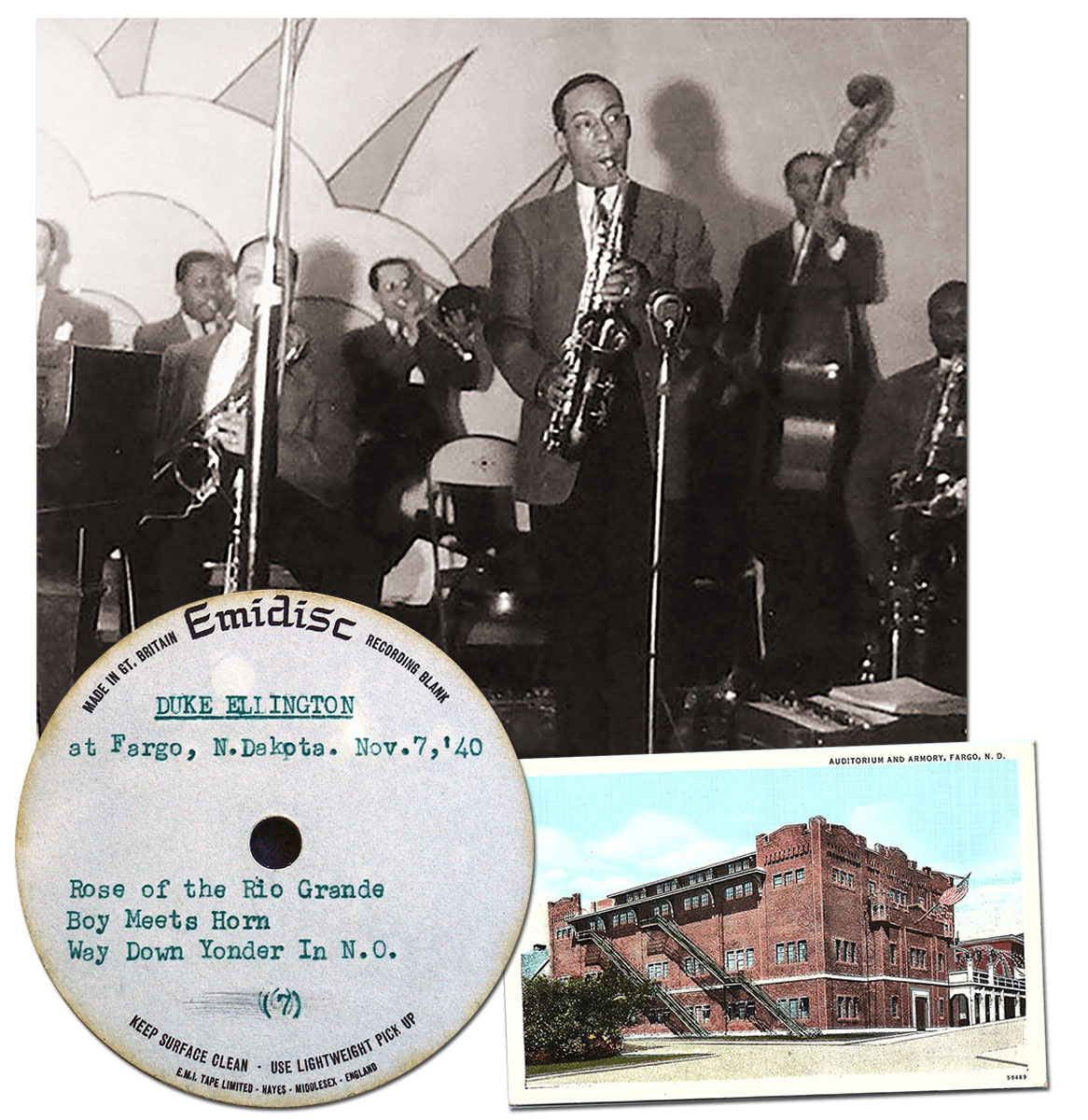
Acetate recording label, Hodges soloing and Crystal Ballroom location, Fargo 1940. L to R: Joe Nanton (trombone), Barney Bigard (alto sax), Juan Tizol (trombone), Johnny Hodges (alto), Jimmy Blanton (bass) and Ben Webster (tenor).
Hot in Fargo, 1940
Familiarity with Fargo 1940 remains confined to true Dukeophiles, though excerpts have occasionally been issued. Marking an elevated creative plateau stretching into the mid-1940s, Ellington had recently hired arranger, writing partner and aide-de-camp Billy Strayhorn and masterful tenor saxophonist Ben Webster.
Only days earlier the multi-instrumentalist Ray Nance had joined the band, taking over the featured trumpet role from Cootie Williams who had just left to join Benny Goodman. Ray also added jazz violin to Duke’s tone palette. Another fresh arrival was the remarkable young bass player Jimmy Blanton–who transformed and modernized Duke’s rhythm section.
Fargo was unseasonably warm that November, a balmy contrast to their previous venue in frigid Winnipeg, Manitoba, Canada. The Crystal Ballroom — named for its central suspended glass reflecting-ball two feet in diameter – was the location for a remarkable performance preserved thanks to a couple of young music enthusiasts.
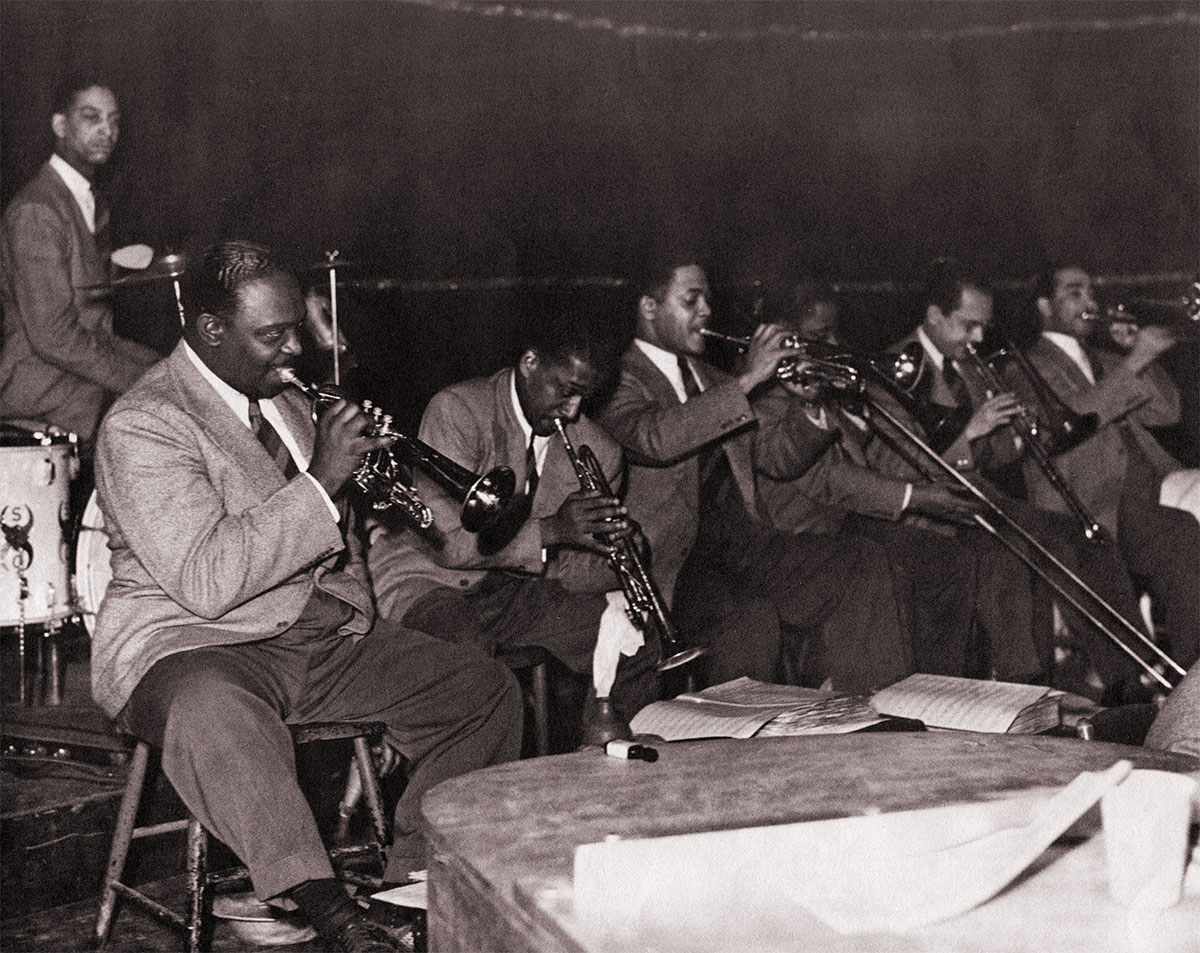
The Famous Orchestra of Duke Ellington in Fargo, ND 1940: Sonny Greer (drums), Rex Stewart, Ray Nance, Wallace Jones (trumpets) and the trombone section of Joe Nanton, Juan Tizoladn Lawrence Brown. All the Fargo photos below are by Jack Towers except as noted.
With Duke’s permission, Jack Towers and Richard Burris brought a portable disc recorder to the venue, cutting a microphone signal directly into the grooves of 33 & 1/3 rpm acetate discs during the concert and broadcast. When musicians heard some of the playbacks they rose grandly to the occasion.
The remastered LP tracks heard here — and Towers’ photos of the concert — are from the 1980 Grammy Award winning Book of the Month Club boxed vinyl set, Duke Ellington at Fargo, 1940 Live (BOMC-5622).
Fargo B – The Mooche, Harlem Airshaft & Ko-Ko.mp3
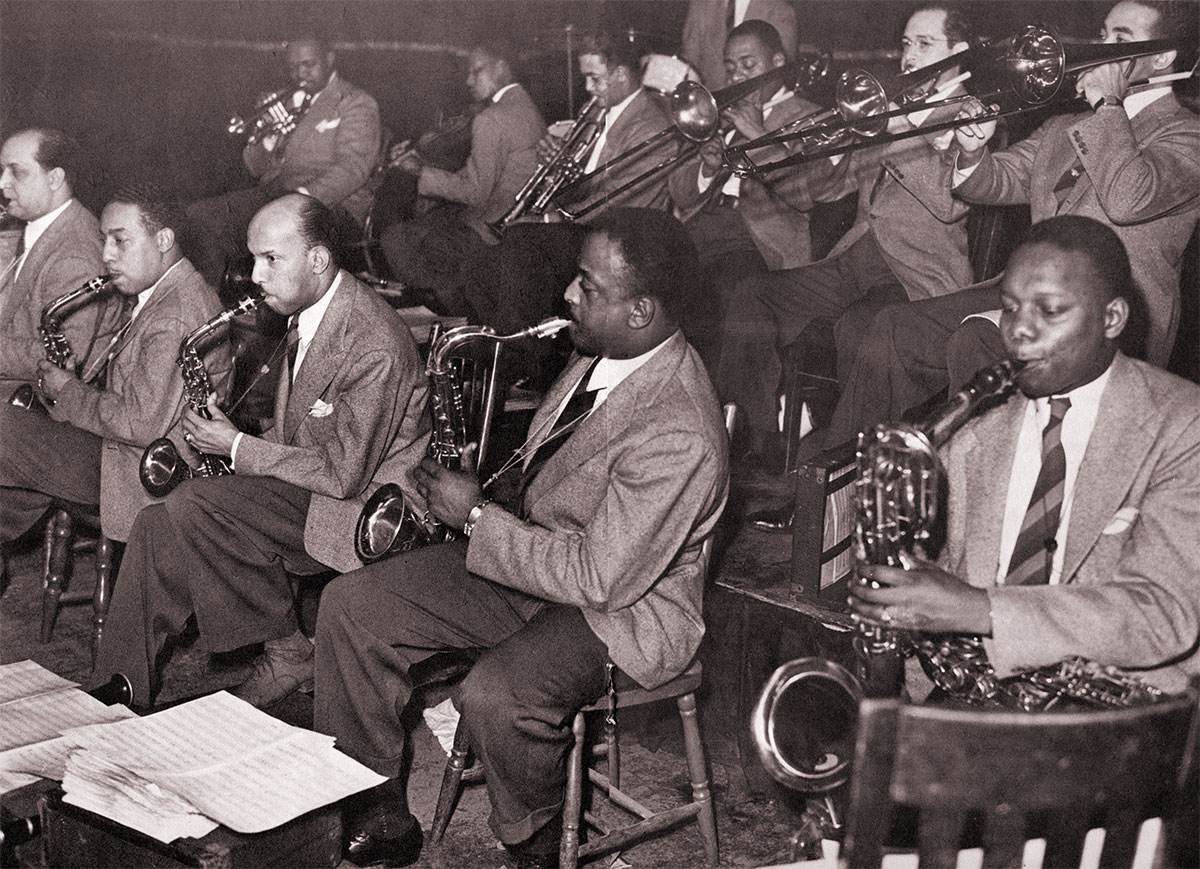
The Famous Orchestra in Fargo. L to R: Barney Bigard, Johnny Hodges, Rex Stewart, Otto Hardwick, Ray Nance, Wallace Jones, Ben Webster, Joe Nanton, Juan Tizol, Lawrence Brown, Harry Carney.
- (Page 1 of 3)
- Next page →

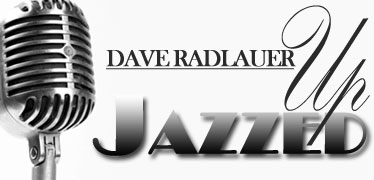
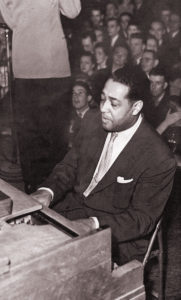
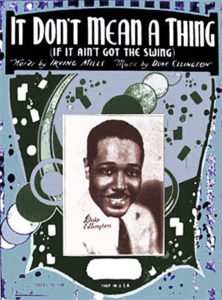
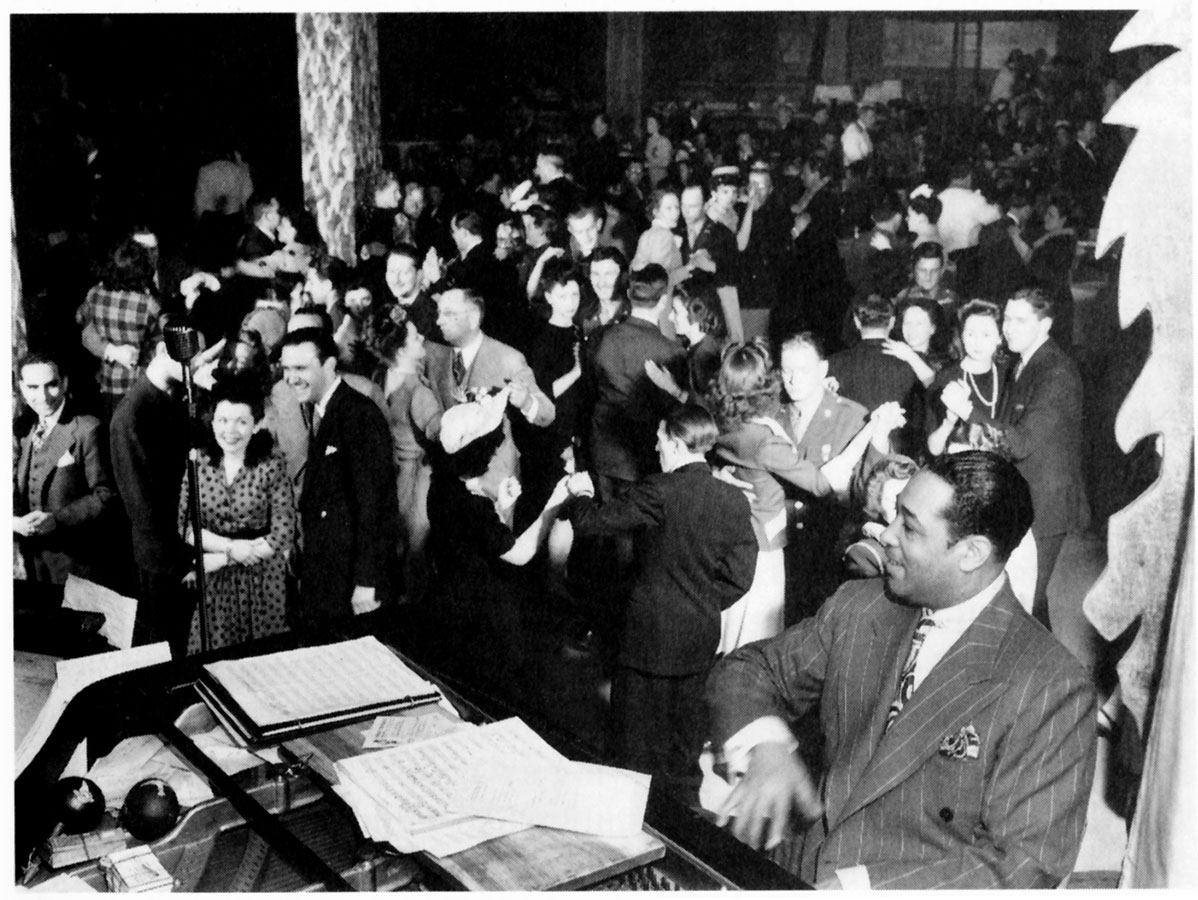
Further exploration:
Duke Ellington Official site:
http://www.dukeellington.com/home.html
Fargo Concert – Wikipedia:
https://en.wikipedia.org/wiki/Duke_Ellington_at_Fargo,_1940_Live
Ellington at Jazz Rhythm:
http://www.jazzhotbigstep.com/19422.html
Some great Music from the Duke! Thank You, Dave!
David,
Great historic videos of the great Duke.